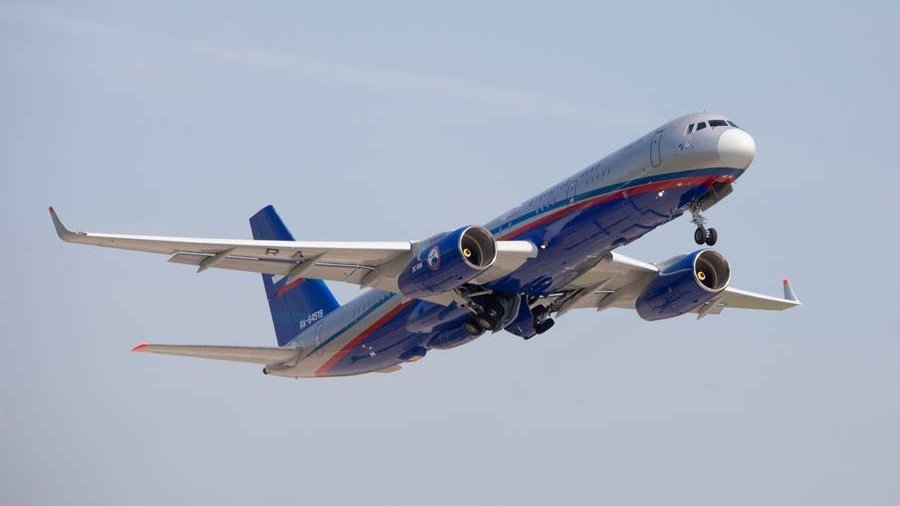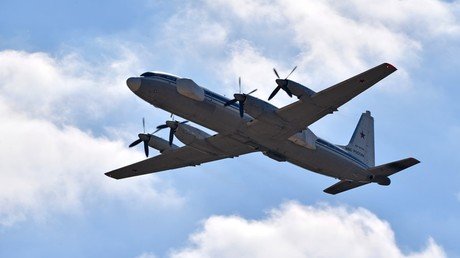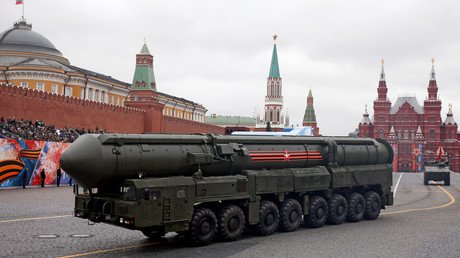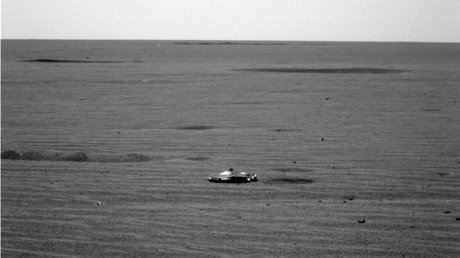Moscow's eye in US sky: Here’s what we know about Russian spy plane cleared by Washington

A Russian plane built for observation flights over the US has finally been deemed fit for the job by Washington. The US and Russia have long agreed to legally spy on each other to ensure neither is building up for an attack.
Certification of the Russian Tu-214ON plane has finally been completed after the US agreed to sign the final protocol on Monday, Sergey Ryzhkov of the Russian Defense Ministry said. Ryzhkov is the head of the Russian Center for Reduction of Nuclear Threat, tasked with monitoring how arms control treaties signed by Russia are being fulfilled.
"It was obvious that there were no technical complaints to Russia and that the certification was only a matter of time," Ryzhkov said. Now the entire Russian fleet tasked with Open Skies observation flights can fly missions over the US and other member states of the deal.
Spying for peace
The Treaty on Open Skies is one of the relics of the times when words like "perestroika" and "glasnost" heralded a democratic transformation of the giant in the east to Western audiences and nobody said Moscow's opinion about NATO was irrelevant. Both Cold War blocks wanted to reduce tension, and being transparent about each other's intentions was crucial. So, they hammered out a treaty, which would allow short-notice inspections of each other's territory – meant to confirm that no secret deployment of troops was under way.
The treaty was signed in 1992 but didn't enter force until a decade later in 2002. At the moment there are 34 member states: the US, Canada, European nations, Russia and a couple of other former Soviet republics. In practice it allows Russia and its ally Belarus to legally spy on the US and its allies, while NATO states are in turn able to fly over Russia and take photos without any hurdles.
Each state picks which aircraft to use for the semi-surprise surveillance sorties. Russia's fleet initially included Antonov An-30s, to fly over Europe, and a specially converted model of the Tupolev Tu-154 for North America.
However the Russian Defense Ministry wanted a dedicated surveillance aircraft for such flight, so it ordered two modified Tupolev Tu-204/214 passenger planes. The first Tu-214ON ('otkrytoye nebo', or 'open skies' in Russian) made its maiden flight in 2011 and the second one in 2013. Up until now they were not allowed to conduct observation flights outside of Russia.
What's new in this plane?
Compared to a regular Tu-214, the Open Skies version has a few extra perks. The cockpit was enlarged to house two more people. In addition to the captain, second pilot and flight mechanic it has seats for a navigator and interpreter/communications officer. The overhaul of the cockpit gave an opportunity to replace some older hydraulic controls with more comfortable electronics.
The body of the plane lost some weight after some of the metal control surfaces were replaced with those made of composite materials. This boosted the range of the Tu-214ON to a reported 6,500km (4,040 miles), compared to 4,340km (2,700 miles) of a civilian Tu-214.
Additional windows were made for surveillance equipment in the lower part, where the passenger variant stores luggage. And an auxiliary power plant was added to feed the cameras and recorders as well as serve as a backup source in case of an emergency.
What can its 'digital eyes' see?
The initial observation equipment for the Tu-214ON was developed by engineering company Vega to stay below the resolution limits imposed by the terms of the Treaty on Open Skies. The agreement allows things like identifying military hardware on the ground or recording layout of civilian infrastructure, but not more sensitive surveillance on certain electronic equipment or identities of military personnel, which better-quality imagery would allow.
The three sensor arrays included a digital photo camera, an infrared camera, and a TV camera, with sideway-looking synthetic aperture radar providing additional data.

The use of digital sensors, as strange as it seems, is a novelty for Open Skies flights. While the possibility of upgrading sensors from the 1970s film cameras was discussed by member states since the mid-2000s, a consensus was not reached until 2010. Russia used to object to such a move but then became a pioneer of introducing digital technology. It even developed its own specialized sensors, which became a matter of controversy.
What took the US so long?
The initial attempt to certify Russian OSDCAM cameras in 2013 failed after the US objected, claiming that the devices could have better capabilities than stated by Russia and that they may manipulate digital data to fool other member states.
Washington changed its mind a year later, but only after a lot of debate. Quite a few publications in the US media had claimed Russia benefits too much from the Open Skies initiative and also argued that US spy satellites can give the same data without any flights at all.
This year, the certification of the Tu-214ON was a retelling of the same story. After ten days of tests and demonstrations in the Moscow region for experts from member states, the US delegation was the only one to refuse allowing the aircraft into its airspace. The Russian military said that no explanation was offered. But now, apparently, the surveillance plane is OK for the US.
"I believe they waited for the right moment. [US President Donald] Trump is to speak before the UN, so the Americans make this gesture, showing they are ready to cooperate with all other nations, including Russia," suggested Aleksandr Bartosh, a veteran Russian military diplomat and researcher. "It's purely political. There were no technical obstacles to certifying it."
Military expert Aleksandr Zhilin said he wouldn't exclude a scenario, in which Washington would allow the Russian plane in only to soon withdraw from the treaty altogether. After all, the US and Russia have been bickering about which side fails to deliver on its obligations under this and many other international treaties. "The Americans cannot be trusted," he said.
Sure, there a lot of mistrust on both sides, but it's sad to see those trust-building mechanisms like Open Skies crumble.
If you like this story, share it with a friend!
















